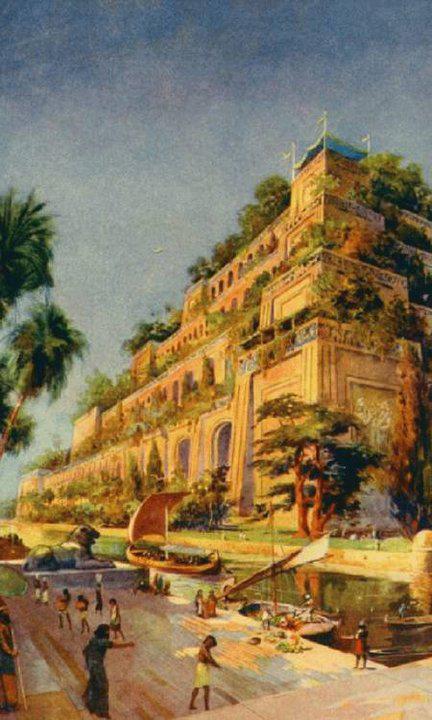الجنائن المعلقه
The Hanging Gardens of Babylon
جنائن بابل المعلقة، قرب مدينة الحلة حاليا، بابل- العراق، تعتبر واحدة من عجائب الدنيا السبع الأصلية في العالم القديم و بعض الأحيان يشار إليها بإسم جنائن سميراميس المعلقة. و قد تم بناءها من قبل الملك البابلي نبوخذنصر الثاني حوالي 600 ق.م. و يقال بأنه قد أنشأها لإسعاد زوجته التي عانت من مرض الحنين إلى الوطن، آميتيس الميدية، و التي إشتاقت للأشجار و نباتات بلادها العطرة بلاد فارس. و قد تهدمت الجنائن بفعل عدة هزات أرضية بعد القرن الثاني الميلادي
جنائن بابل الخصبة قد وثقت من قبل المؤرخين الإغريق كسترابو و ديودورس و سيكولوس. عبر العصور، بقي الموقع مربكا بين وقوعها في نمرود، لأن ألواحا من هناك تصف الإستعمال المفترض لشيئ ما يشبه لولب أرخميدس كوسيلة لرفع الماء لإرتفاع مطلوب
نبوخذنصر الثاني إستعمل أيضا بلاطات هائلة من الحجر، التي لم يسمع عنها في بابل، لمنع الماء من تعرية الأرض
/////////////////////////////////////////////////////////////////
The Hanging Gardens of Babylon, near present-day Al Hillah, Babil in Iraq, are considered to be one of the original Seven Wonders of the Ancient World. They are sometimes referred to as the Hanging Gardens of Semiramis. They were built by the Babylonian king Nebuchadnezzar II around 600 BC. He is reported to have constructed the gardens to please his homesick wife, Amytis of Media, who longed for the trees and fragrant plants of her homeland Persia.The gardens were destroyed by several earthquakes after the 2nd century BC.
The lush Hanging Gardens are extensively documented by Greek historians such as Strabo and Diodorus Siculus. Through the ages, the location may have been confused with gardens that existed at Nimrud, since tablets from there clearly show gardens. Writings on these tablets describe the possible use of something similar to an Archimedes screw as a process of raising the water to the required height. Nebuchadnezzar II also used massive slabs of stone, which was unheard of in Babylon, to prevent the water from eroding the ground.
للمزيد الرجاء الأطلاع على // for more please visit
:: سلسلة أثريات ولوحات من بلادي ::







 رد مع اقتباس
رد مع اقتباس

